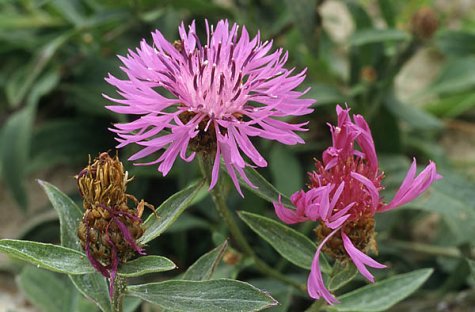Cornflower relatives
Photo: Arne Ader
Translation: Liis
Brown knapweed.
| Brown knapweed |
Arujumikas
|
Other relatives of this member of the Compositae or aster family are – although perhaps hard to believe at first glance – ox-eye daisies and sunflowers, dandelions and burdocks ...
The knapweeds are perennial plants; cornflowers are annuals, lower growing and with a more delicate outline. Both species can occasionally have pink or white flowers.
The brown knapweed can sometimes be confused with the sturdier greater knapweed; the flowers of the latter are more violet-tinged and larger, the leaves deeply pinnately lobed. The leaf margins of the brown knapweed are generally entire, sometimes sparsely toothed. At the outer edge of the knapweed flowerhead there are funnel-shaped florets. They serve to entice insects to the flower but they have neither stamens nor pistils, they are sterile.
Insects carry the pollen from one flower to others; in the centre of the flowerhead there are tubular inner florets with both a pistil and stamens – these florets take care of the reproduction of the knapweed.
The knapweeds are weeds like the cornflower, but they belong to our beautiful weeds.









